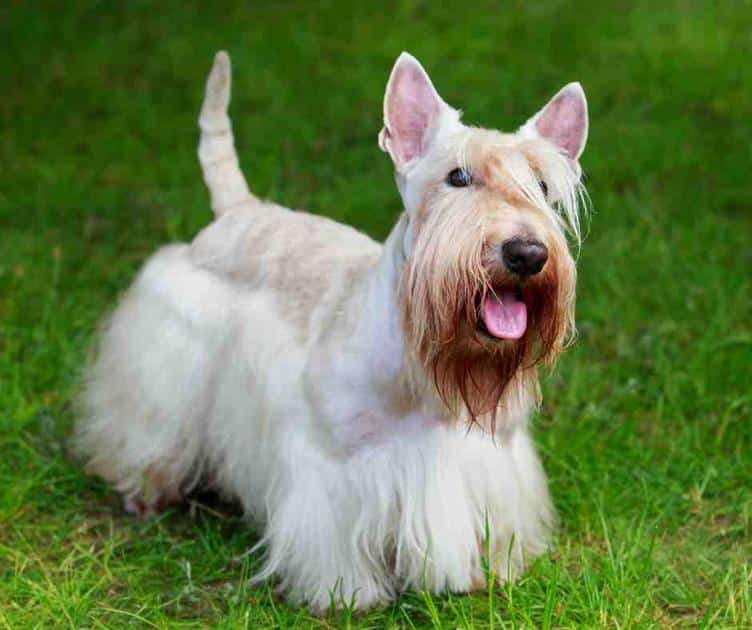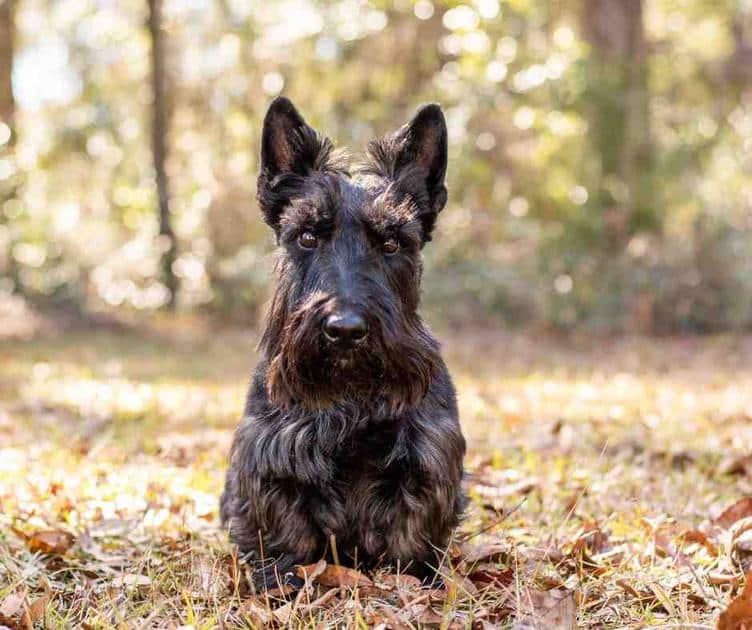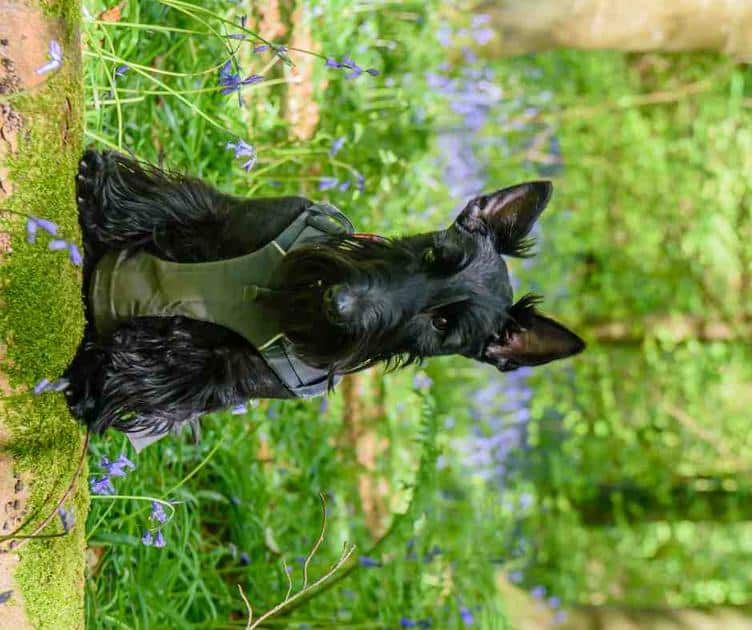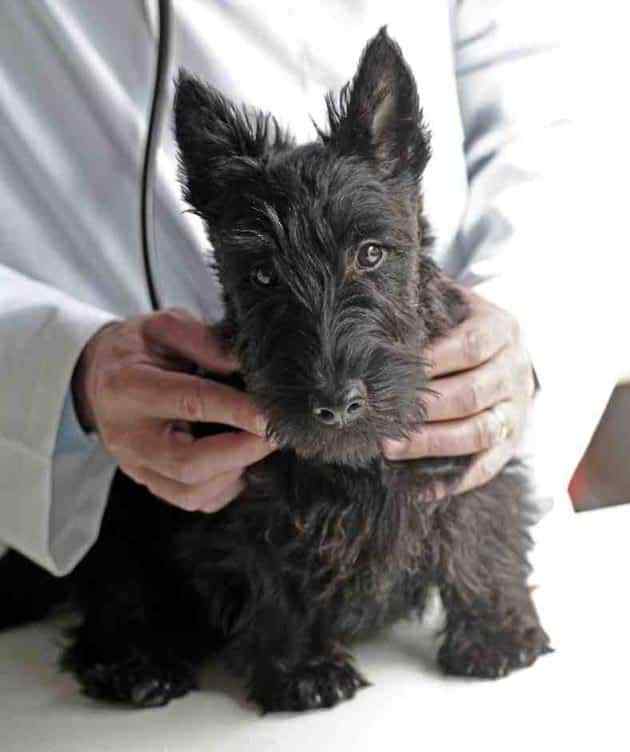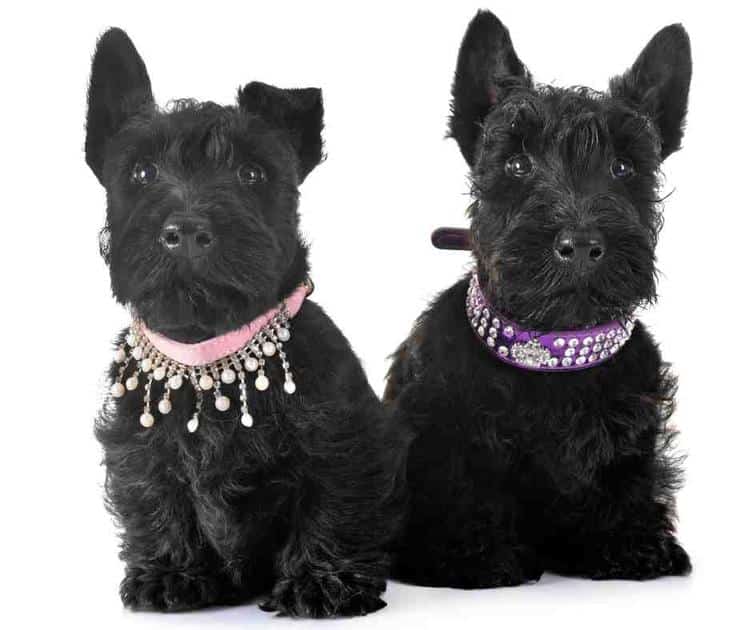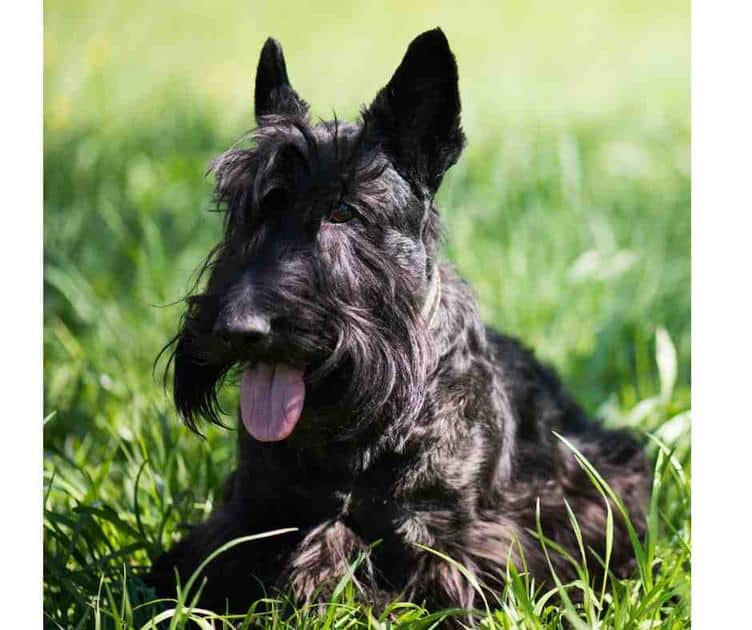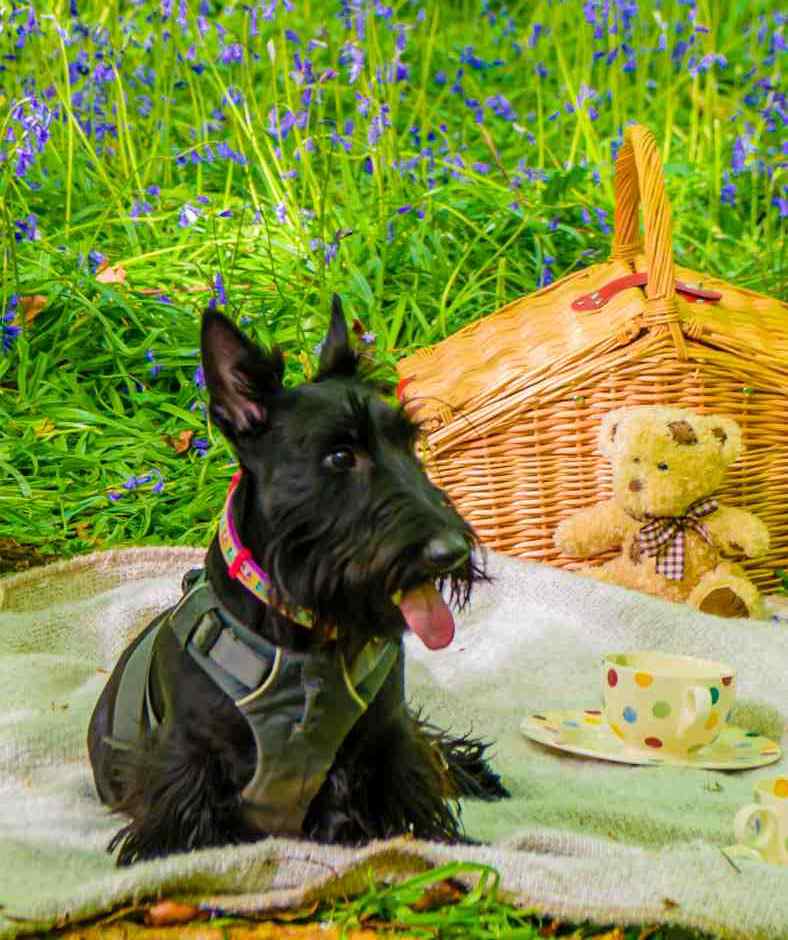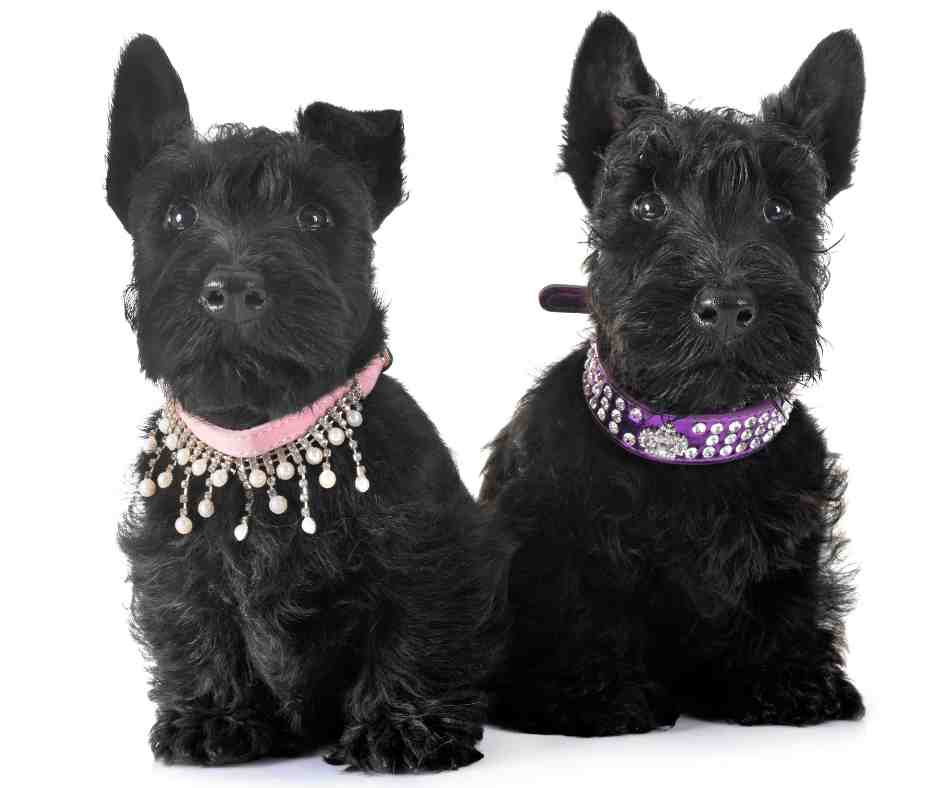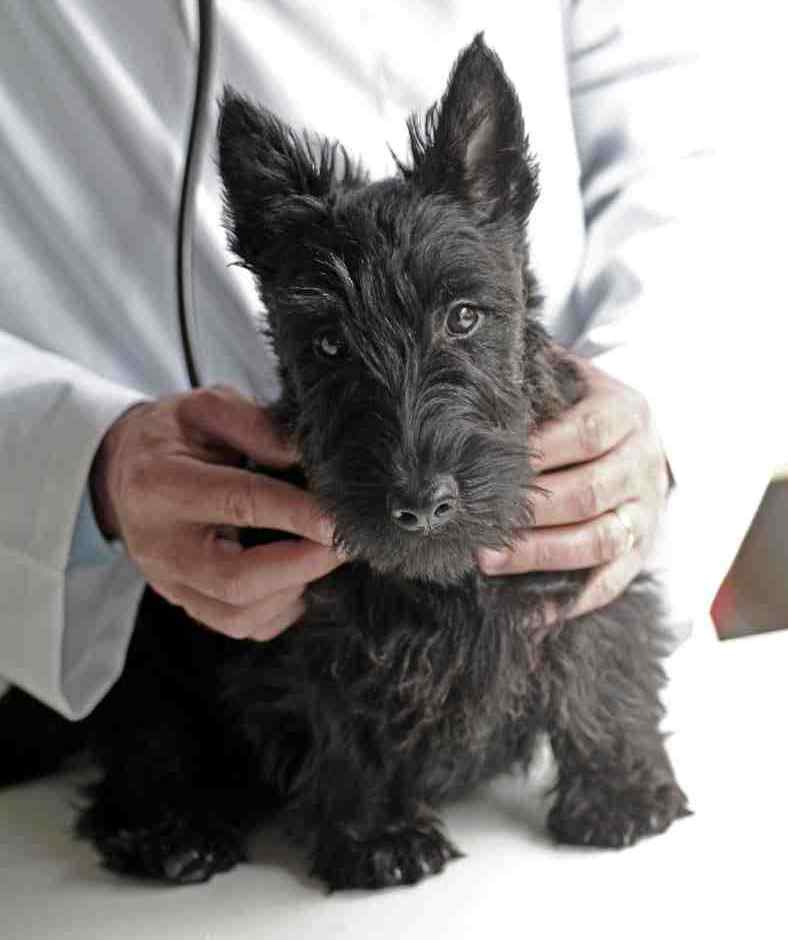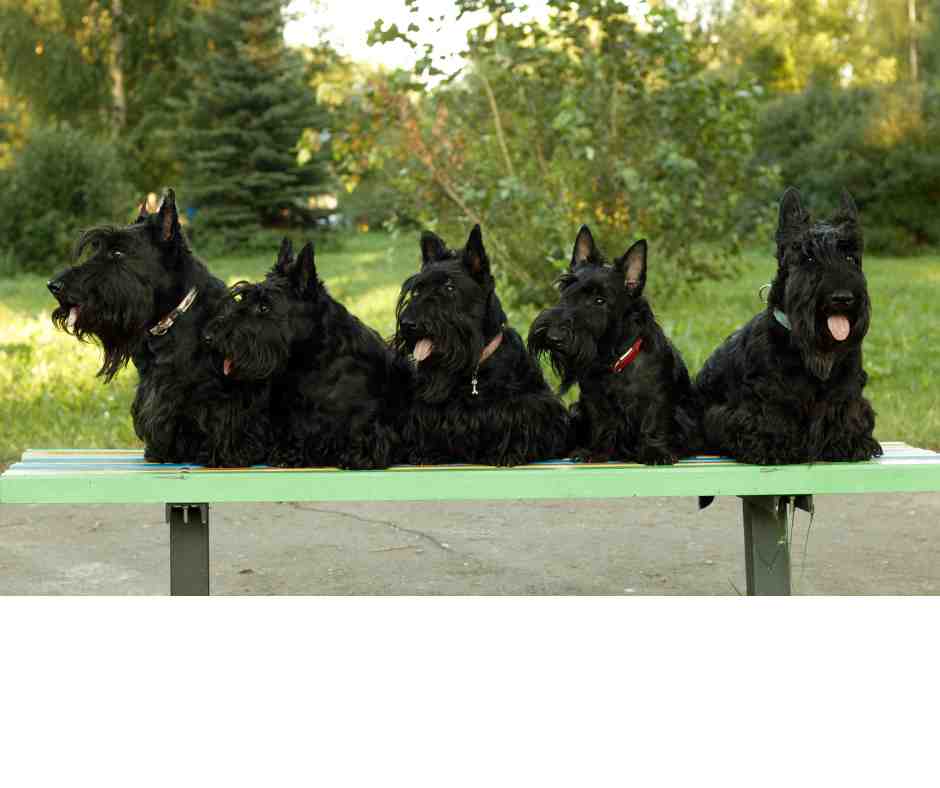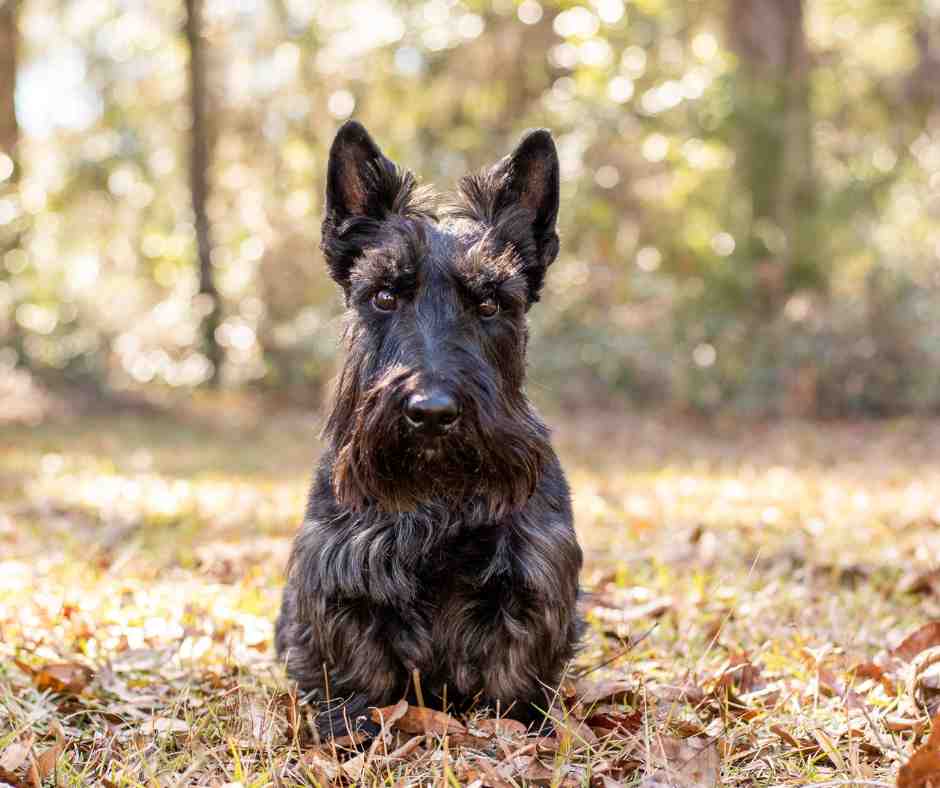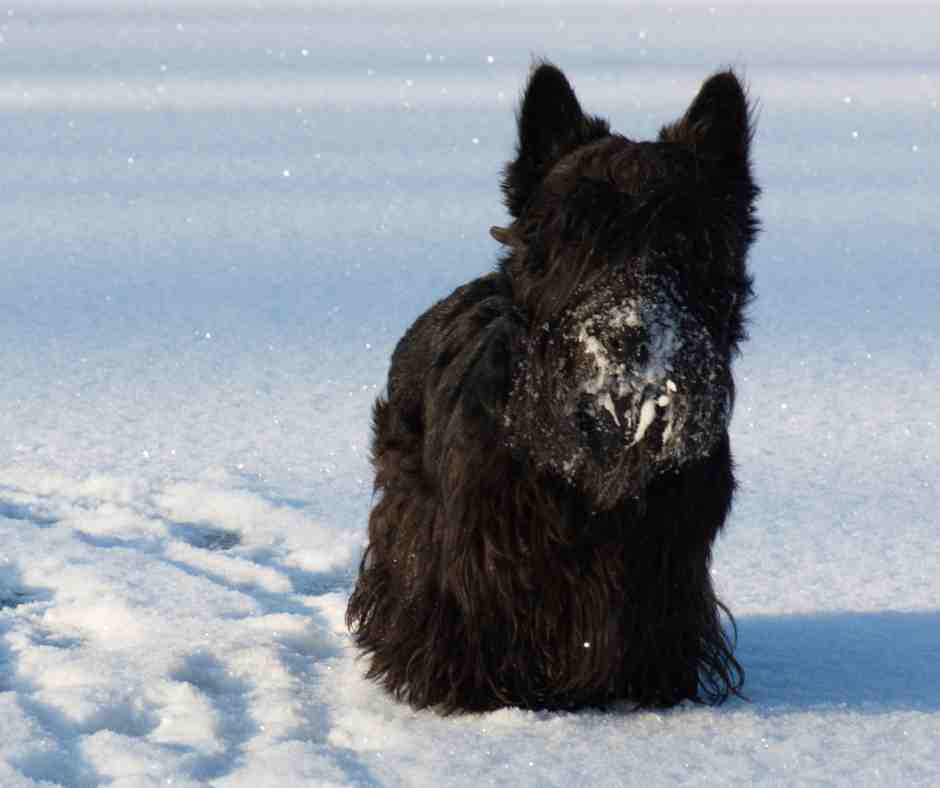Introduction to Scottish Terriers
Scottish Terriers, often affectionately known as “Scotties,” are small but sturdy dogs with a distinctive appearance and a bold, confident personality. One of the more popular dog breeds starting with S, this breed is famous not only for its unique silhouette but also for its spirited nature and dignified demeanor.
In this comprehensive guide, we will explore the origins, characteristics, and needs of Scottish Terriers to help potential owners and dog enthusiasts understand more about this charming breed.
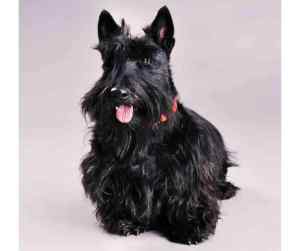 Scottish Terrier Breed Facts
Scottish Terrier Breed Facts
- Country of Origin: Scotland
- Breed Group: Terrier
- Height: About 10 inches at the shoulder
- Weight: 18-22 pounds
- Lifespan: 12-15 years
- Average Price: $1,000-$2,000
- Hypoallergenic/Non-Shedding: Yes, considered hypoallergenic
- Good With Kids: Yes, but best with older children
- Breed Characteristics: Independent, confident, and spirited
History of the Scottish Terrier
The Scottish Terrier’s history dates back to the 1700s in Scotland, where they were originally bred to hunt small game and vermin. The breed was developed to dig and burrow into the dens of foxes and badgers.
This history is evident in the Scottie’s strong, compact body and tenacious personality. The breed gained popularity in the 19th century, becoming a favorite among royalty and celebrities, which helped to establish its status as an iconic symbol of Scotland.
Scottish Terrier Personality
Scottish Terriers are known for their independent and sometimes stubborn nature. They possess a quiet dignity and can be reserved, yet they are also loyal and protective of their families.
Scotties are not typically overly friendly with strangers, which makes them excellent watchdogs. They can be playful and affectionate with their family, showing a softer side to those they trust.
Appearance
Scottish Terriers have a distinctive appearance with a hard, wiry outer coat and a soft, dense undercoat. They are most commonly black but can also be found in wheaten or brindle.
Their eyes are small, sharp, and bright, conveying a keen intelligence. They have a long head, which contributes to their distinguished, noble expression, and their ears are pointed and erect, adding to their alert demeanor.
Scottish Terrier Photo Gallery
Scottish Terrier Health Concerns
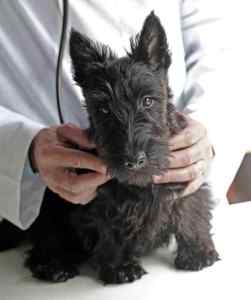 Scottish Terriers are generally healthy, but like all breeds, they are susceptible to certain health conditions. Knowing these can help prospective owners prepare to care for their pet effectively.
Scottish Terriers are generally healthy, but like all breeds, they are susceptible to certain health conditions. Knowing these can help prospective owners prepare to care for their pet effectively.
- Von Willebrand’s Disease: A blood disorder that affects clotting.
- Craniomandibular Osteopathy: This condition affects the skull bones and can cause pain during the dog’s puppy months.
- Scottie Cramp: A movement disorder that is not painful but can cause awkward movements.
- Cushing’s Disease: Affects the adrenal glands and can lead to more serious health issues if untreated.
- Bladder Cancer: Scotties have a higher risk of bladder cancer than other breeds.
Exercise Needs
Scottish Terriers require regular exercise to maintain their health and happiness. They enjoy walks and should have opportunities to explore and play within a securely fenced area.
Despite their small size, they are energetic and thrive on activity but will also appreciate time inside with their family.
Scottish Terrier Training and Behavior
Training a Scottish Terrier requires patience and consistency. Due to their independent nature, Scotties may not be the easiest breed to train, but they are intelligent and capable of learning quickly when engaged positively.
They respond best to training that includes treats and rewards, and they require firm but gentle handling to respect their handler’s authority without becoming timid.
Scottish Terrier Grooming Needs
 Scottish Terriers require regular grooming to maintain their distinctive appearance. Their wiry coat needs to be brushed several times a week and professionally trimmed every few months.
Scottish Terriers require regular grooming to maintain their distinctive appearance. Their wiry coat needs to be brushed several times a week and professionally trimmed every few months.
Regular grooming helps to prevent matting and can reduce shedding, which is minimal with this breed.
Care Needs
In addition to regular physical activity, Scottish Terriers need mental stimulation to prevent boredom and promote their well-being.
They enjoy puzzles and games that challenge their intellect. Socialization is also important for Scotties, as their natural wariness can turn into aggression if they are not accustomed to other people and dogs.
5 Frequently Asked Questions About Scottish Terriers
- Are Scottish Terriers good with children?
- Scottish Terriers can be good with children, particularly if raised with them, but they are best suited to families with older children who understand how to interact with dogs respectfully.
- How long do Scottish Terriers typically live?
- They typically have a lifespan of 12-15 years.
- Can Scottish Terriers live in apartments?
- Yes, Scotties can adapt well to apartment living provided they receive sufficient daily exercise.
- Are Scottish Terriers aggressive?
- They can be territorial and may exhibit aggression towards other dogs, but proper socialization can mitigate this behavior.
- Do Scottish Terriers shed a lot?
- No, they are considered hypoallergenic and are known for minimal shedding.
Is the Scottish Terrier the Right Breed for You?
If you appreciate a dog with a strong personality and distinctive look, and you are prepared for the grooming and care requirements, a Scottish Terrier might be the right breed for you.
They are suited to those who understand and respect their independence and can provide the structure and affection they need.
Thank you for your interest in our Scottish Terrier breed profile. Be sure to check out the many additional breed profiles listed on our Small Dog Breeds A to Z home page.






